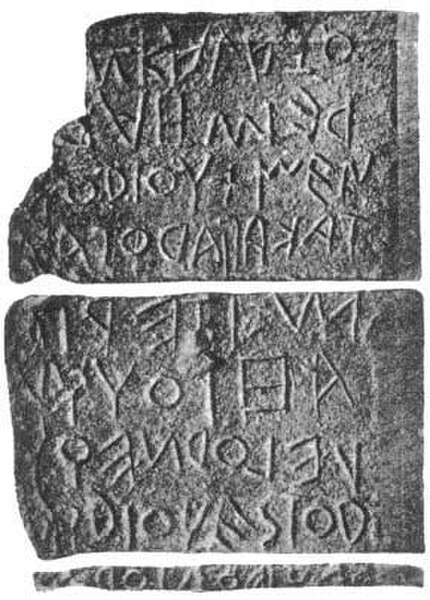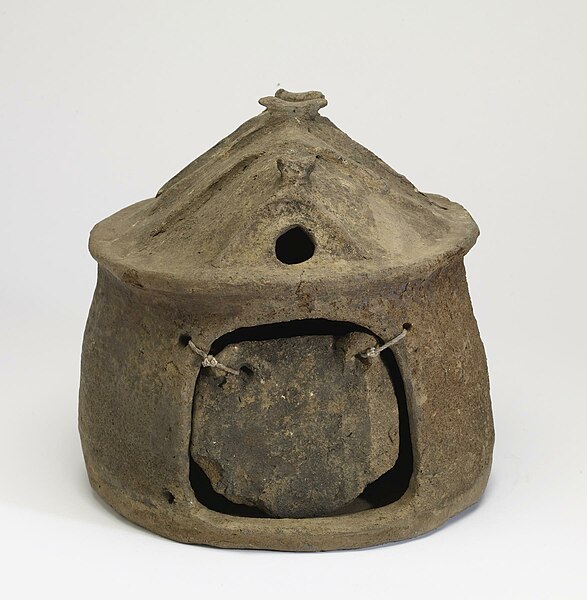Old Latium is a region of the Apennine Peninsula bounded to the north by the Tiber River, to the east by the central Apennine Mountains, to the west by the Mediterranean Sea and to the south by Monte Circeo. It was the territory of the Latins, an Italic tribe which included the early inhabitants of the city of Rome. Later it was also settled by various Italic tribes such as the Rutulians, Volscians, Aequi, and Hernici. The region was referred to as "old" to distinguish it from the expanded region, Latium, that included the region to the south of Old Latium, between Monte Circeo and the river Garigliano – the so-called Latium adiectum. It corresponded to the central part of the modern administrative region of Lazio, Italy, and it covered an area measuring of roughly 50 Roman miles. It was calculated by Mommsen that the region's area was about 1860 square kilometres.

Polychrome antefix with female head with nimbus from Lanuvium, late-Archic temple of Juno Sospita, 500 BC, Villa Poniatowski, Rome
Acroterial statue of harpy-siren, beginning of the 5th century BC, from Gabii
Frontonal sima with procession of floats and winged horses, 510–490 BC, from Praeneste
Antefix with Satyr and Maenad dancing from the acropolis, Temple of Mater Matuta, 490–470 BC, from Satricum
The Latins, sometimes known as the Latials or Latians, were an Italic tribe which included the early inhabitants of the city of Rome. From about 1000 BC, the Latins inhabited the small region known to the Romans as Old Latium, that is, the area between the river Tiber and the promontory of Mount Circeo 100 km (62 mi) southeast of Rome. Following the Roman expansion, the Latins spread into the Latium adiectum, inhabited by Osco-Umbrian peoples.
The Lapis Niger, probably the oldest extant Latin inscription (c. 600 BC)
Villanovan culture cinerary hut-urn, showing the likely shape of Romulus' Hut in Rome: a simple mud-and-straw shelter
The "Rain Miracle": Jupiter the Rainmaker rescues the Romans during the Marcomannic Wars (AD 166–80). The soldiers of legion XII Fulminata, who were surrounded by the Quadi Germans and severely dehydrated, were saved by a thunderstorm, which reportedly materialised out of a clear sky. Note the god's wings. Detail from the Column of Marcus Aurelius, Rome
View of Albanus mons (Monte Cavo, 949m), the sacred mount of the Latins in the Alban Hills. The annual religious rites of the Latin Festival were held on its summit. In foreground, the Alban lake, filling the caldera of an extinct volcano








